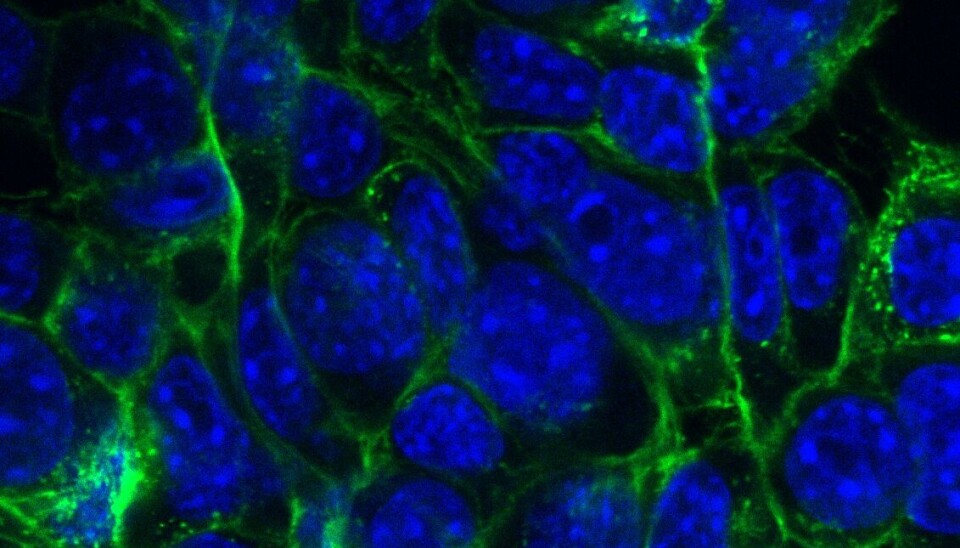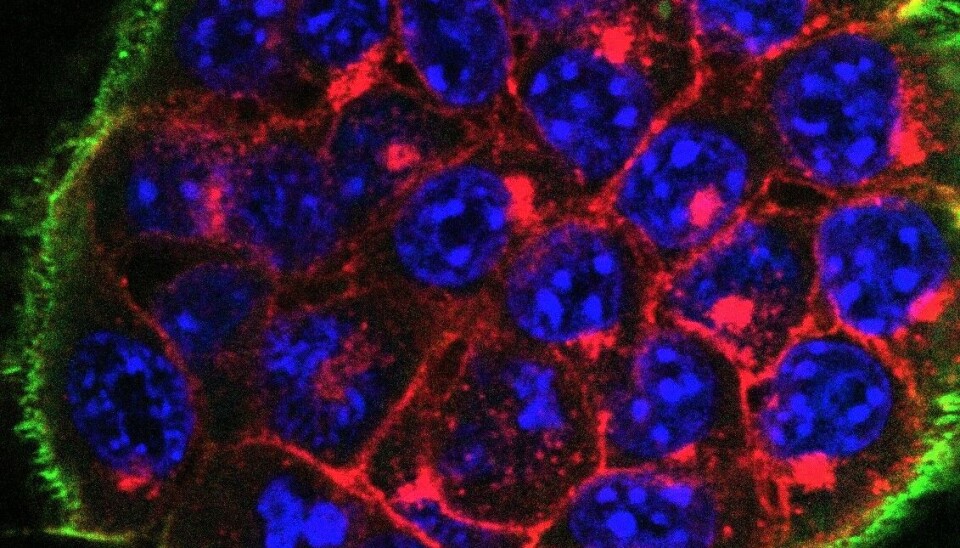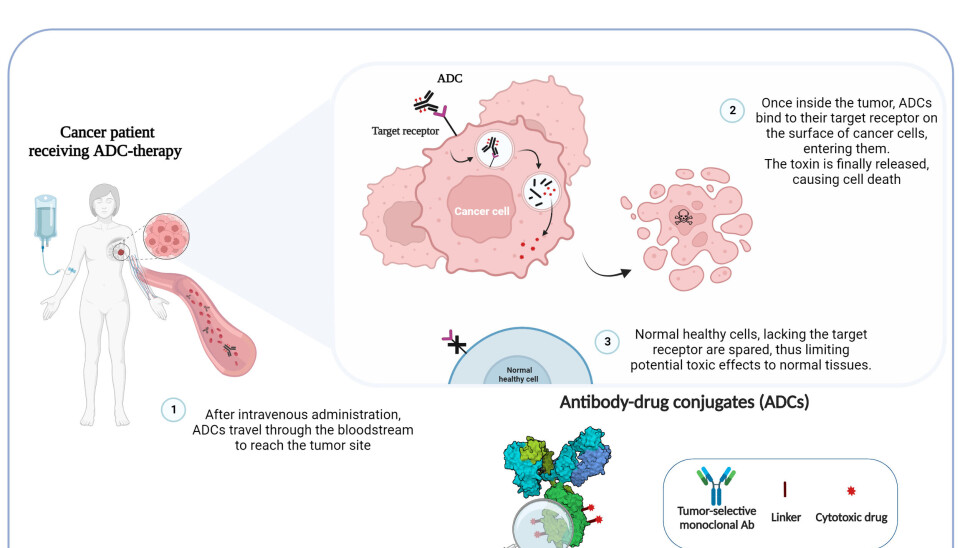Researchers' Zone:

Turning the Right Cell-Switch to unlock the Cure for Cancer
All cells have thousands of switches on their surface, so-called ‘receptors’. Turning the right ones allows us to develop smart and more effective cures against cancer.
Everyone has his mission.
Cancer researchers and scientists, every day, in remote and tidy laboratories, eagerly try to understand how cancer arises and develops, with the goal being finding the right ‘Achille´s heels’ that can be leveraged for therapeutic development.
And here I am, one of them, a Ph.D. student in Cancer Immunotherapy, where I am currently researching the use of antibodies to deliver drugs into cancer cells.
Today I´ll tell you more about this novel treatment modality that is revolutionizing the therapeutic landscape for many cancer patients.
My first scientific ‘date’ with Immuno-oncology (a treatment modality that leverages the immune system to fight cancer) was nine years ago.
It was a September afternoon of my first year of Bachelor. After a long day, I was tired and looking forward to going home. Yet, when the class started, without even noticing, I was entirely captured, and I hope it´ll be the same for you all.
Let´s start with the main characters of this story, the immune system, and antibodies.
Our body’s army against diseases
The immune system is our first line of defense against infections and diseases. Different players intervene and team up to fight the unwanted invaders and keep us safe.
Among the players are antibodies. These are Y-shaped molecules, released, like countless missiles, by specific immune cells, called B cells.
Once unleashed, this antibody army, breathlessly seeks out the enemy throughout the body.
Fitting like a key in a lock, their Y-shape allows them to specifically recognize and mark the intruders, thus helping the other immune cell warriors to see and destroy them.
To tackle the myriad number of invaders, our body evolved to generate an extraordinarily big number, accounting for a quintillion, or one million trillion, of unique antibodies.
However, as in all stories, things are not always easy and not all enemies are the same.
The shrewd enemy tricking our immune system
Cancer cells arise from healthy cells upon a dramatic change that makes them forget who they were and what was their purpose in our body.
The only thing they want is to multiply and invade new territories, like conquerors, during a war. And, as we know, war only brings destruction, pain, and suffering.
Now, you may rightly ask - as I also did -why can´t our immune system defeat cancer cells?
It´s because cancer cells are intelligent enemies. They elaborate strategic tricks to hide and hijack our defences, like Harry Potter´s invisibility cloak.
On the other hand, they can actively suppress the immune system by releasing some potent ‘sleep’ molecules. Even worse, tumor cells can corrupt immune cells, turning them against their other immune cell friends.
All this ultimately leads to life-threatening tumor growth.
Finding the right switch
Although cancer cells are smart, they can be hijacked in several ways, as long as you find the right switch.
‘Switch? What are you talking about,’ you might wonder. Let me explain:
All cells have thousands of switches on their surface. These switches, what we call “receptors” work like antennas.
They sense the surrounding environment and regulate a multitude of biological processes, like cell growth, metabolism, cell-cell communication, and so on.
To sustain their uncontrolled growth and high energetic needs, the number of these receptors dramatically increases in cancer cells compared to healthy cells.
Smart antibodies
To take advantage of these specific cancer signatures, researchers envisioned a novel type of cancer treatment, called ‘targeted’, which means against the tumor.
In the case of immunotherapy, the goal is to instruct and guide the immune system to find and attack the invisible cancer cells.
And, here, antibodies come to hand. By exploiting their intrinsic targeting nature, we can create smart antibodies able to specifically recognize the tumor-selective receptors.
As such, they can either stop or control tumor growth or flag the tumor cells as ‘eat me’ signals enabling recognition and destruction by other immune cells, as shown in this video.
The video explains how smart antibodies work. (Video: Nature video)
The trojan horse of antibodies
On the other hand, we can also equip antibodies with potent anti-cancer drugs.
The so-called antibody-drug-conjugates filled with cancer drugs use the antibodies as trojan horses to deliver these weapons inside the cancer cells, ultimately killing them.
This is what I show in this colorful microscopy image: The round structures bound together in a pomegranate-like aggregate, are cancer cells.
The red puncta close to their nucleus (in blue) are antibodies internalized after binding to a cell surface ‘switch’, a receptor I am studying in my anticancer research.

Microscopi image of a cancer cell internalized with antibodies. The image has recently been selected for a calendar by the Antibody society and it will be distributed at the Antibody Engineering and therapeutics conference in 2023. Image: Virginia Metrangolo
The main advantage of this targeted therapy is that normal healthy cells, lacking the receptors, are overall spared, thus limiting the adverse effects commonly associated with standard chemo- and radiotherapy, as illustrated in the overview below.

A glimpse of my research work
In my Ph.D. project, I developed a novel antibody-drug-conjugate-based therapy to treat pancreatic cancer, one of the most difficult-to-treat tumors, with no current therapeutic options available.
Preliminary results are promising, as we could successfully obtain tumor reduction/regression in preclinical animal models.
Besides pancreatic cancer, the same therapy can also be potentially useful in other cancer indications bearing the same target receptor.
The most powerful aspect of this approach is the opportunity to rationally design and optimize the antibody to favor tumor-cell recognition, over normal tissues, or activate other immune cells to come into play.
Although there is still a long way to go, and despite the numerous challenges, I feel and hope my work, along with that of many passionate researchers like me, may give a contribution, even if small, to the fight against cancer.
If awareness of the weapons available to fight this war grows, confidence in research and novel therapies will grow as well.






